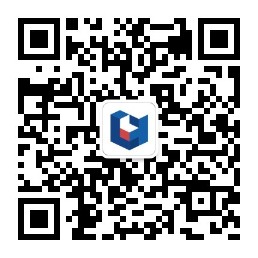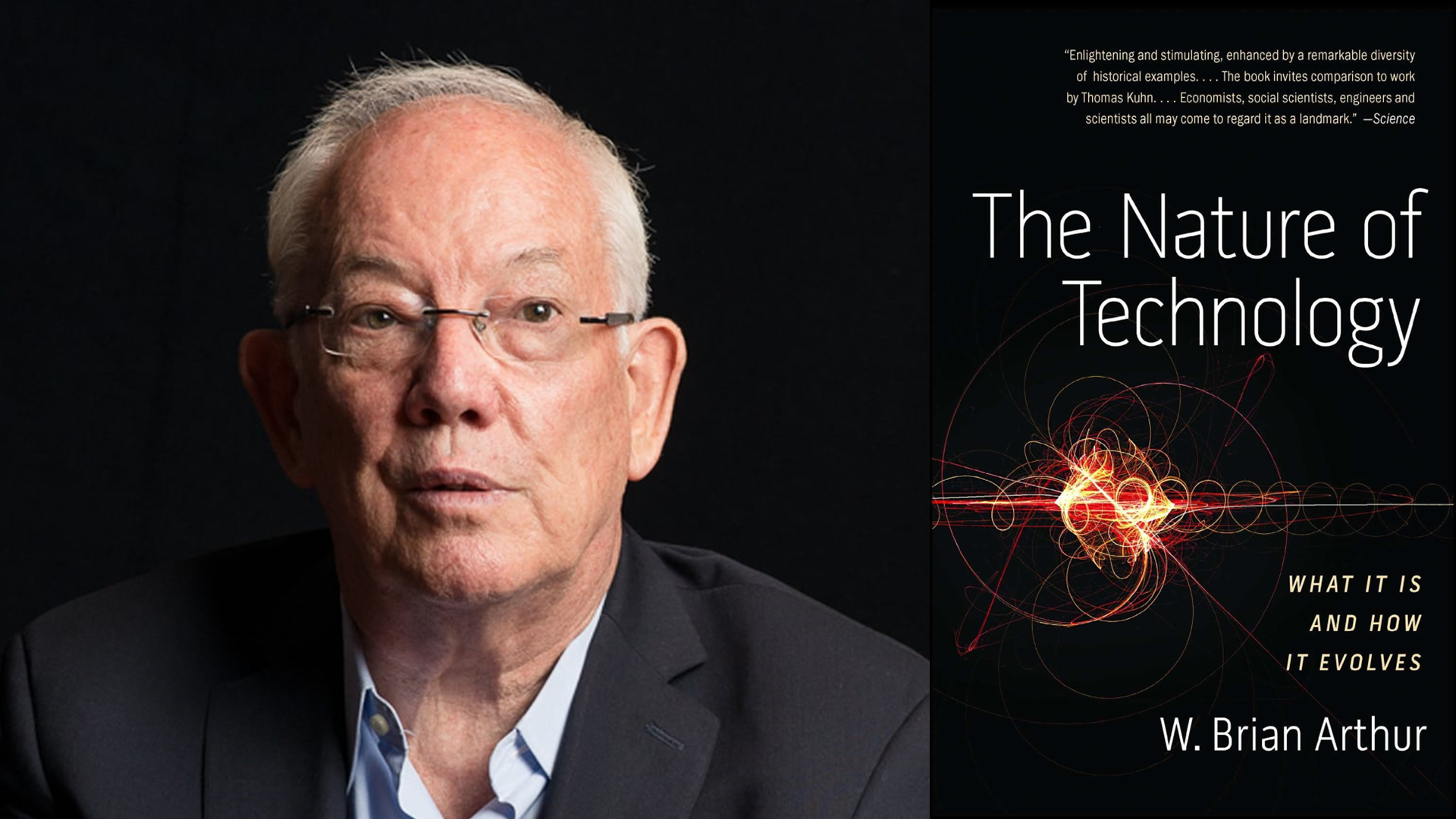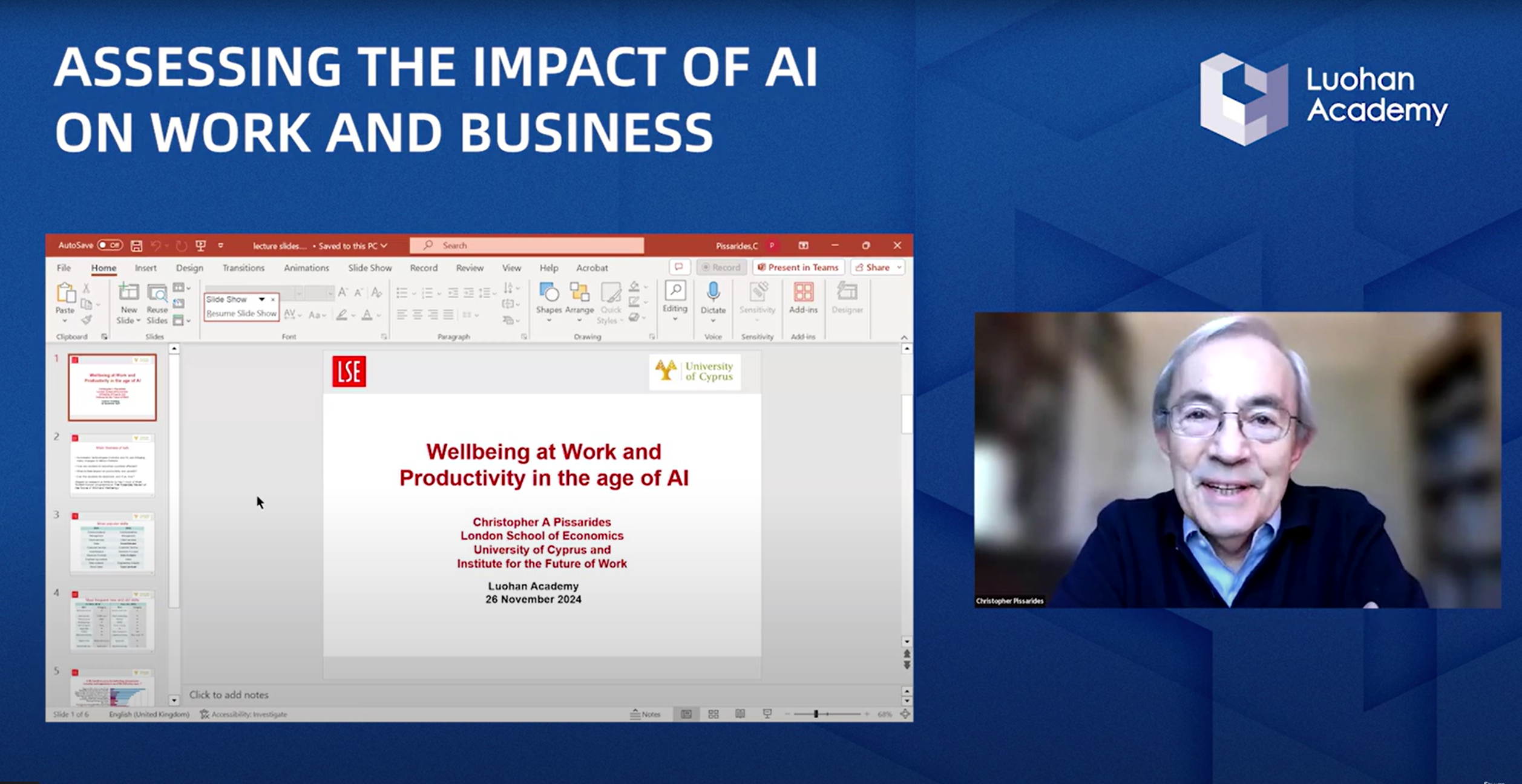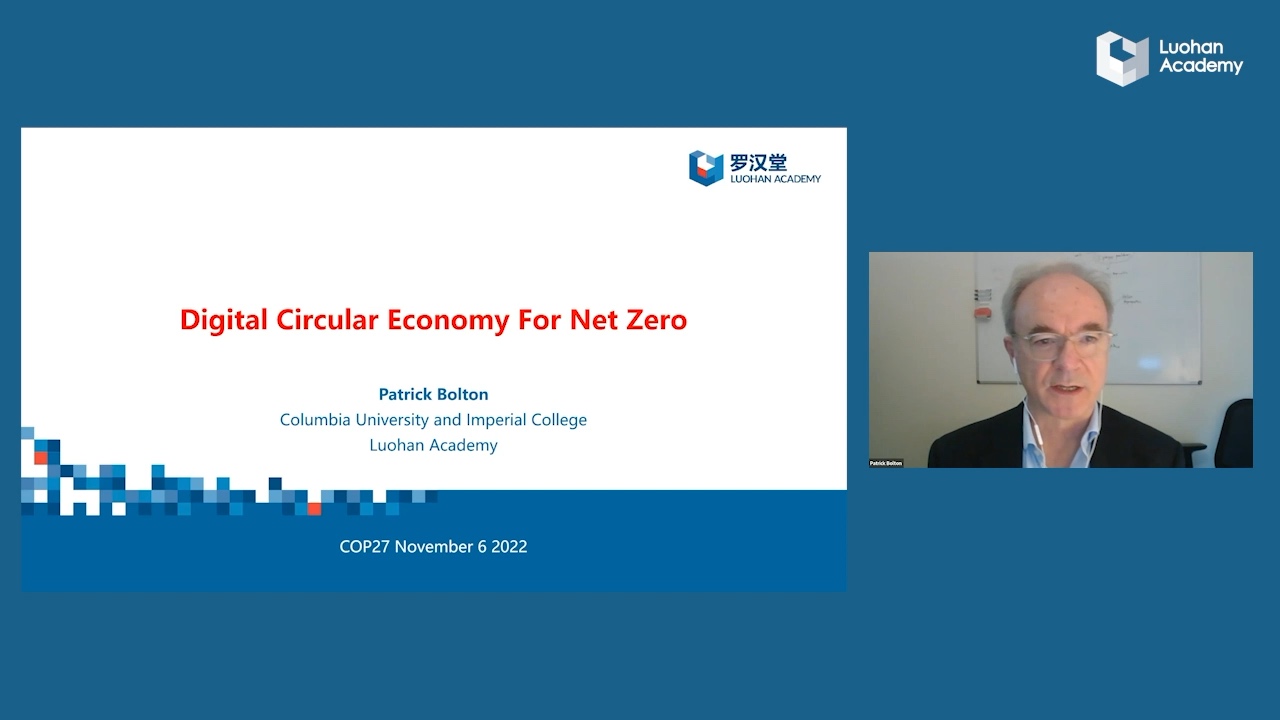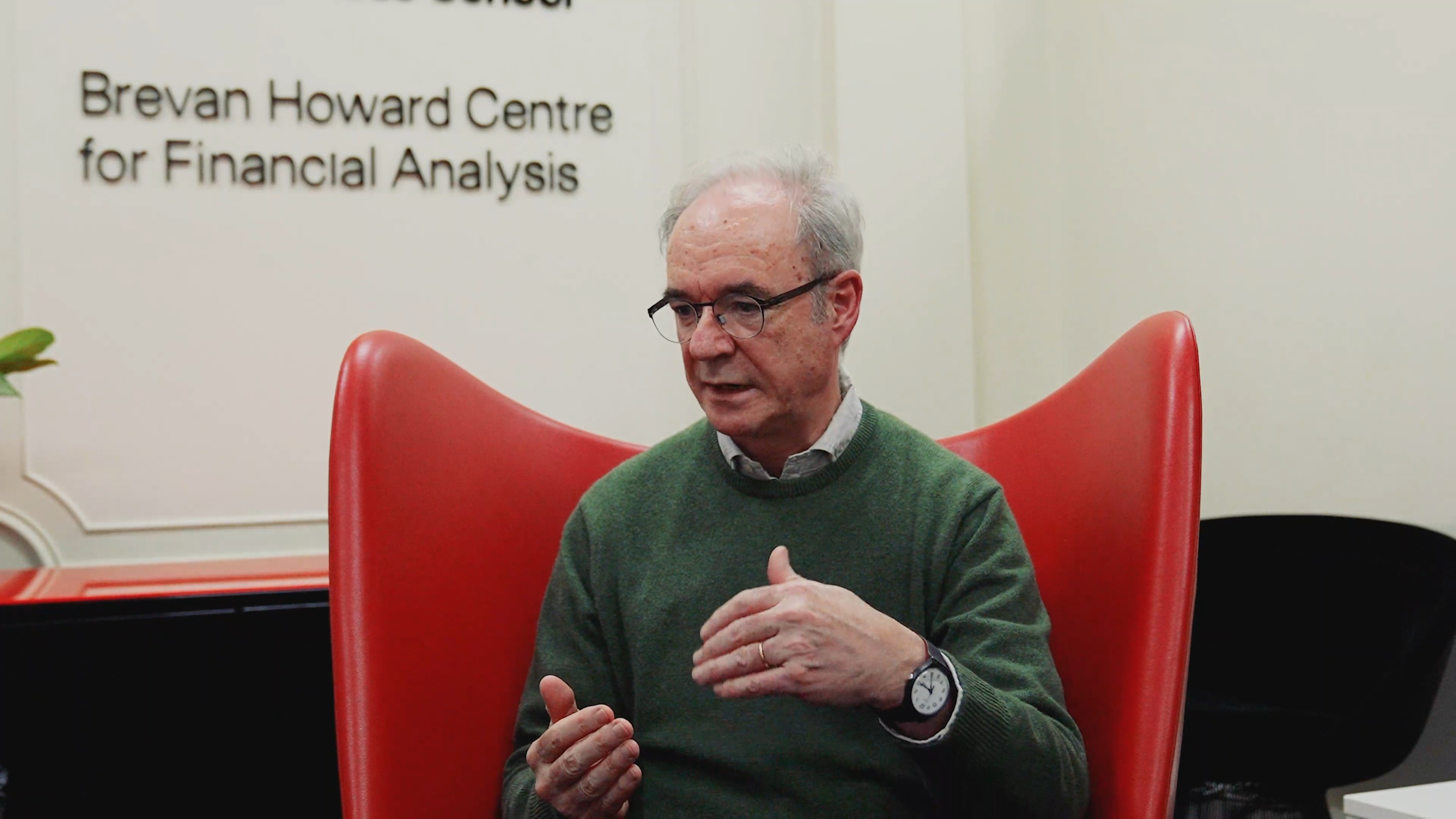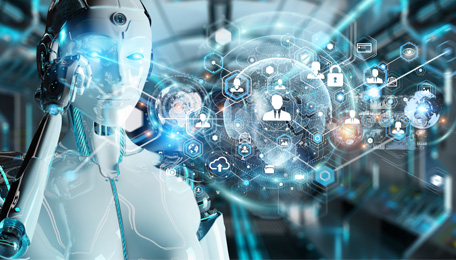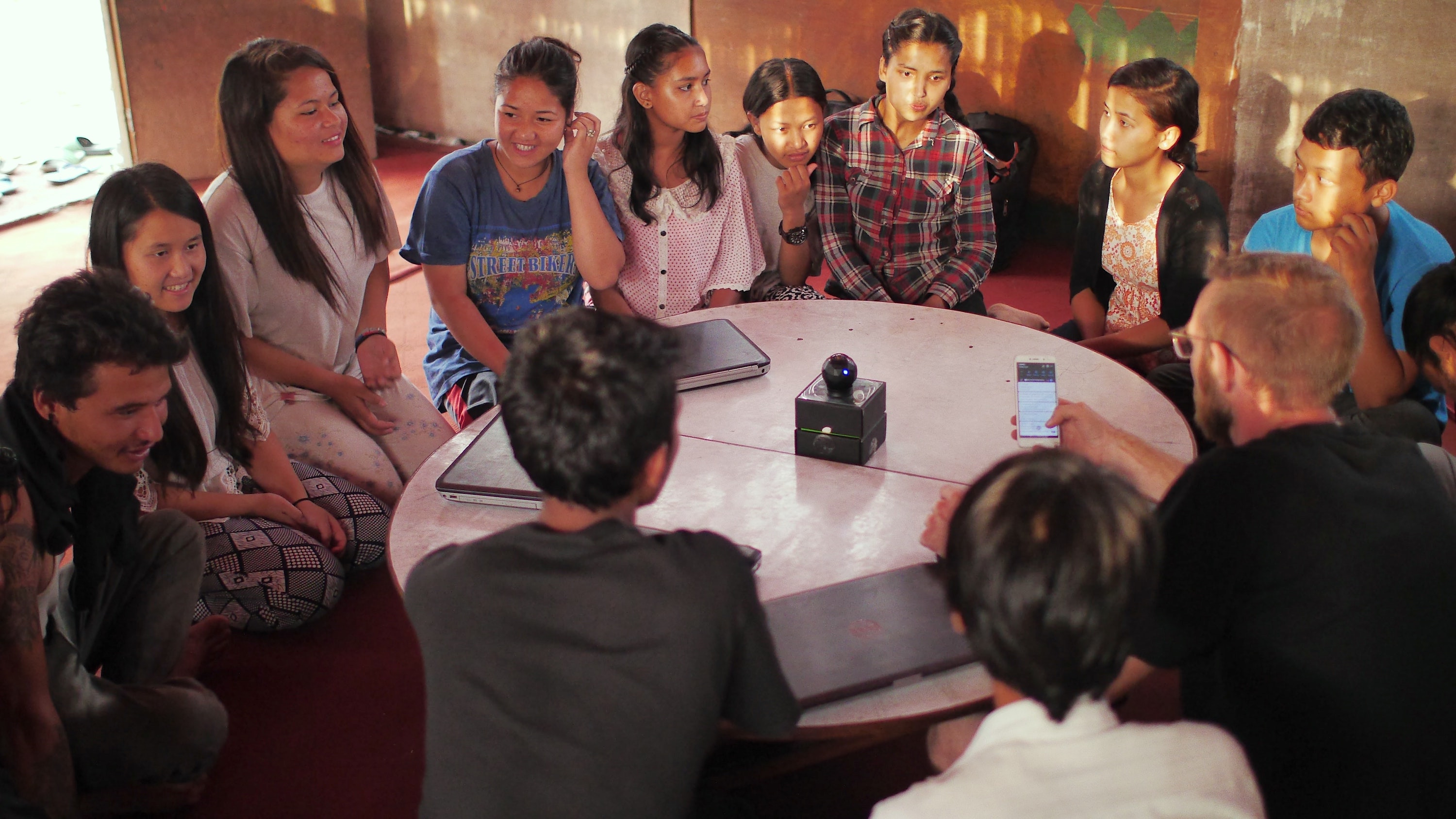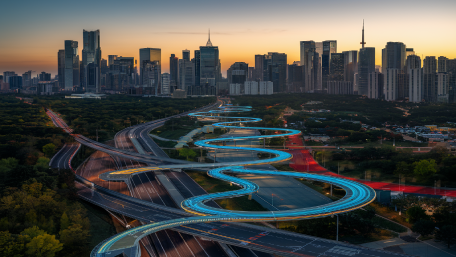The last speaker from the Luohan Frontier Dialogue, Sean Ding of Alibaba Group, explains the future of leveraging big data through a more interconnected digital world. In the future, everything will have a digital twin that can give new insights to policymakers, companies, decision-makers and individuals in the "New Economy."
This Dialogue intends to provide a forum for prominent scholars, policymakers and industry experts to exchange views and collaborate on possible new and better measurement approaches.
Luohan Academy has been in close collaboration with some of the world's foremost social scientists, policy experts, and business practitioners to document and analyze society's and the economy's ongoing digital transformation worldwide. Our very first Frontier Dialogue focuses on the measurement of the new economy, a crucial step in the direction of better understanding the impact of digital transformation.
Transcript:
Sean Ding:
So alright, can you hear me? Okay.So, thank you, everyone for giving me the opportunity to present our understanding about the digital economy. So the IoT is internet of things and AI is artificial intelligence. So I will go into...rolling back a little bit, into the last 20 years from, you know, 1990s to 2000s the 2010 and all the way to 2020.So between 2000 and the 2010, this is most widely adopted internet. You know, the Yahoo and Google, and in China is a Baidu, Alibaba and Tencent. So what's that, it's the infrastructure of the PC internet is driven by cable modem and the DSL and what they are delivery of the electronic content is the information, the information. For the last 20 years, from the 2010 all the way to 2020, that's called the mobile internet, the key infrastructure is mobile broadband and the location, the GPS location.
So at the end of the 2020, at the end of the last decade, we finally saw the location-based service and the, in US is Airbnb and Uber; in China, there is what we call the TMD "Toutiao", "Meituan", and "DiDi".So they are all trillion RMB, or $100 billion worth of the market, the companies, including Alibaba and Tencent, lifting ourselves from the PC internet era all the way to the mobile internet era. So we grow more than five times as the market size and also, you know, access to more, almost a billion consumers. That's what we were able to do. So then we look at it in the next tech decades. What is the infrastructure by 2030 or 2040?And what is the application we're driving? What's the content we'll be delivering on the internet? So the view is that, first of all the content will be, we will digitize the whole physical world. Instead, we digitize just the information. So the second, on the internet, we using artificial intelligence, we will try to make sense of it, and we will understand the world better. That's the title we are coming from.
So, and how to realize the end-to-end data insights for every enterprise. So you have three data. One is a business application like ERP CRM. The second is operation data. You know, if you see the left-hand side, at the end is IoT and all machines, including the camera, including temperature sensor, then you have data ingestion, data storage, data processing, data visualization, and analysis, and data visualization. And at the end of the day, you'll give the insight to the decision makers. So internet of things of the era in the next 10 years, and we learned from the Android, learned from Apple. Apple and Android, what do they do? They are actually connecting one 10 billion people, 10 billion people. So we have some 7.5 billion people in the planet, but we probably already sold the more than 10 billion smartphones. So in the next decades, we will go into connecting 1 trillion devices, 1 trillion things, including trees, naturally world, including maybe animals, naturally world. And maybe in a horse, we use sensing and necklace sensing like that, that we will connect.
In the last decades, we built hardware abstraction layer using Android. So any application can be downloaded and installed on any smartphone. So in the next decade, what are we going to do is we will digitize every single device, including factory, home, and including other cities. Then we build a digital abstraction layer. So then we can download application from the cloud down to your home, down to your bus, down to your city, down to your classroom, down to your factories. So we will expand the Android more than 10 times internet next decade of digitize of the world. Let me run the animation a little bit again. So we will build a parallel digital world like the physical world. Then we make sense of it and get the insight. Then we come back to the physical world. So then we, of course, IoT will digitize the entire physical world.
And we will be using a lot of, you know, physical softwares, including this CAD, CAE, CAM. And we will describe the physical world. And for example, we can describe airplane using software. We can describe a factory using software. We can describing a horse using software. We can describe everything using computer software. That's the content we will deliver in the next decades. And what's the infrastructure? We need to build a persuasive[pervasive] computing platform from the sensor to the gateway, all the way to the cloud. Then, we can store all the entire digital world into the cloud. Then we can digitize the physical world and store the digital world into the cloud. Then we can ready to be shared. Then what will be the major driving force of the so much bigger of the data information of the communication. Of course, it's 5G.
The 5G you can see two things that, in the ref left right left bottom, that's called a massive machine type communication. And the right button is outrightly liable, and a low latency communication. Those two applications are solving IoT. One is solving a lot of the metering. For example, in your community, there may be a million metering, or a million sensors in your community, along a one square kilometers, then you need a massive machine type autonomous. And, but if you have a lot of machine autonomous vehicle, then you need an ultra reliable and a low-latency communication. So if you digitize the whole world, if you have the factory, if you have the car in the digital world, then you need a human to interview interface with the digital world. Then you need AR VR.
The AR VR, you need a driving. There is a massive of the visualization. You need to be driven by enhanced mobile broadband. You need more than 20 gigabyte bits per second, and then download it to your glasses, downloaded to your screens. So you can see, the 5G will be helping the IoT and also helping the user and the consumer to interact with the digital world, a universal digital world, and the mMTC is for the high density. Then the uRLLC will be the driving the low-latency applications. So one thing, what we can do is I try to just give you a piece of flavor. If we want to digitize the entire world, we can digitize the entire world by a vertical sector, a vertical sector, a vertical sector. So we can start with digital factory.
So how we digitize factories? One really easy thing. So we can find the elements of the factory and essence of the factory, what it is. So mainly the workers, man, machine, material, methodology, and the measurement. So if we can be using IoT, using an RFID, using the camera, using all the sensors and all the gateways so we can digitize entire factories. So then we can provide the data to the entire life cycle of the industrial product, from the supply chain, equipment and machines and the factory and the task, and the marketing CRM. All the software, they can tackle the data that are never seen before, never seen before. So once you get the more data, then you digitize the whole factory.
Then you can use it in optimize your supply chain, optimize your running of the factory, optimize your marketing or CRM. So then you optimize your financing so you can do much more better. So what we can do is, certainly this factory, we already digitize the hardware piece of it. So we need to do a software piece of it too. So with the left hand side, ISA 95 model is you have the IT, OT and the machine. So the right hand side, all you can put all your IT software onto the cloud, put your OT software on the edge and use the IoT hub and the gateway to connect into all your machines. So in the new digital age, you have to using cloud and edge and the gateway to digitize your factories.
So this is a piece of the architect of how to digitize the factory. So you can see in the middle is edge, that you call the link edge, which is a brand name of a piece of software. We have two computers, and there is edge. In the bottom left, we can use the gateway to connect every machine or equipment; in the right hand side, we use the edge node to connect the cameras or any other mill machines. Then we can use cameras, robots to see how the mill machines or casting machines work. Then, after processing, give the data to do all the cloud, and then we enable everybody in the factory, no longer have PC, no longer have HMI, you can use your tablets or mobile phone. You don't need even a server. You will totally transform your factory operations.
So actually quickly, we do really, you know, we do a very quickly digitization of the jeans of the factories. We do from the AGVs and the washing machines and laser machines and dry machines, etc. And we also do the cutting machines and the labeling machines, etc. So we do the whole thing. And then we use AGV to transfer every material on the floors. So, number one, we build a very flexible, nimble hardware line. Second, we build a really nimble software line. So at the end of the day, we can do the customizing C to M. So customer can order first, then we can quickly manufacture and deliver it in five days, in five days. So this is a how the factory floor looks. So we will able to turn around to the order of the jeans within five days, and, and we can tackle the orders every night, every night.
So then we can use and the high tech to digitize the hardware, we can use the high tech to digitize the software, and apply those hardware and the software into labor-intensive work, and increase the productivity much, much more, and increases the profitability much more. I will quickly give you guys another really quick example about the farmers. So we will able to build a digital farmer, so we can monitor it, to have the video surveillance. We have the pest protection lamp, we have a lot of fertilization sensors, and we also have a lot of the micro climate, etc. So we are able to...Once we were able to monitor the entire fertilization and watering, then we can accurately tune how much water, how much fertilizer we apply.
Then we can increase the growth rates and with much better taste and also with the environment protected. So that's how we look at it. You know, we build a lot of sensors and we will be able to cover water fertilization, soil humidity, carbon dioxide, etc.so we can more scientifical grow it. So right now in China, we build probably hundreds of farmers. And with those digital technologies, you can direct supply of the product into e-commerce. And we also using blockchain to trace where the product come from and how the food safety level is. In summary, we see the industry is at the beginning of the next 20 years of revolution which is Digital 4.0.In the Digital 4.0, the key infrastructure is 5G and IoT, but to the content, we need to digitizes the world and use AI to process the data, and then we can reapply back.
Then we can totally transform almost every sector of the 200 years of human success, 200 years of the industrial revolution. And the second, I think we need a new Moore's Law to enable digitization. We need more sensors. We need a trillion sensors, we need more processing power. We need more storage. We need a more communication bandwidth, etc. So we are continue driving forward the digital tech sector itself. The third, I think IoT is not only connecting hardware, but also connecting the physical world to the digital world, and enable the productivity improvement. So that's all about my sharing. Thank you.
For more information, please visit Luohan Academy's youtube channel: Luohan Academy
